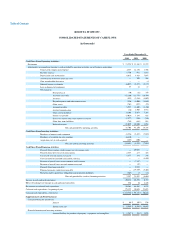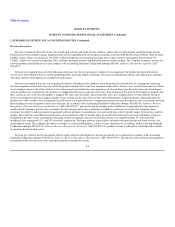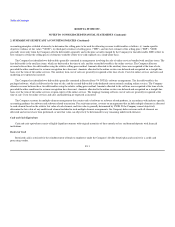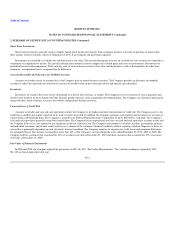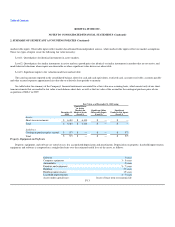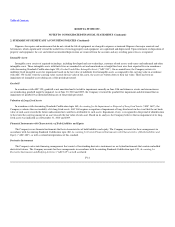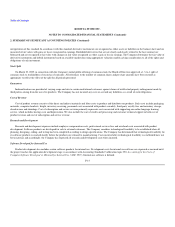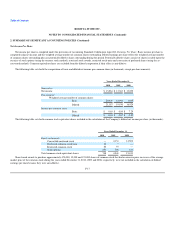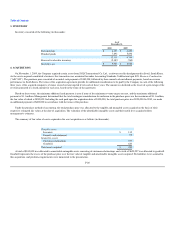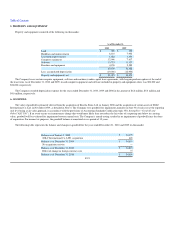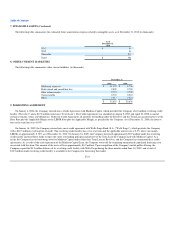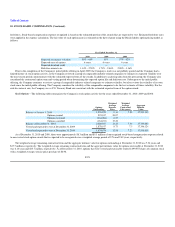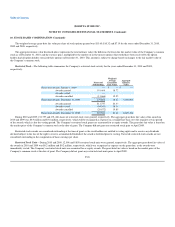Rosetta Stone 2010 Annual Report Download - page 90
Download and view the complete annual report
Please find page 90 of the 2010 Rosetta Stone annual report below. You can navigate through the pages in the report by either clicking on the pages listed below, or by using the keyword search tool below to find specific information within the annual report.
Table of Contents
ROSETTA STONE INC.
NOTES TO CONSOLIDATED FINANCIAL STATEMENTS (Continued)
2. SUMMARY OF SIGNIFICANT ACCOUNTING POLICIES (Continued)
to have the following characteristics: (a) the software is internally developed, or modified solely to meet the entity's internal needs, and (b) during the
software's development or modification, no substantive plan exists or is being developed to market the software externally. Internally developed software is
amortized over a three-year useful life.
For the years ended December 31, 2010, 2009 and 2008, the Company capitalized zero, zero and $0.2 million in internal-use software, respectively.
For the years ended December 31, 2010, 2009 and 2008, the Company recorded amortization expense relating to internal-use software of $0.3 million,
$0.5 million and $0.5 million, respectively.
Income Taxes
The Company accounts for income taxes in accordance with Accounting Standards Codification topic 740, Income Taxes ("ASC 740"), which provides
for an asset and liability approach to accounting for income taxes. Deferred tax assets and liabilities represent the future tax consequences of the differences
between the financial statement carrying amounts of assets and liabilities versus the tax bases of assets and liabilities. Under this method, deferred tax assets
are recognized for deductible temporary differences, and operating loss and tax credit carryforwards. Deferred liabilities are recognized for taxable temporary
differences. Deferred tax assets are reduced by a valuation allowance when, in the opinion of management, it is more likely than not that some portion or all
of the deferred tax assets will not be realized. The impact of tax rate changes on deferred tax assets and liabilities is recognized in the year that the change is
enacted.
In 2010, the Company concluded that it is more likely than not that its deferred tax assets will be utilized and thus recognized a tax benefit of
$2.4 million due to the release of the valuation allowance. The effective income tax rate has benefited from the availability of previously unrealized deferred
tax assets which have been utilized to reduce tax expense for United Kingdom and Japanese income tax purposes. The release of the valuation allowance was
determined in accordance with the provisions of ASC 740, which requires an assessment of both positive and negative evidence when determining whether it
is more likely than not that deferred tax assets are recoverable; such assessment is required on a jurisdiction by jurisdiction basis. Historical operating income
and continuing projected income represent sufficient positive evidence that the Company used to conclude that it is more likely than not that our deferred tax
assets will be realized and accordingly, released the valuation allowance in the fourth quarter of 2010.
Stock-Based Compensation
The Company accounts for its stock-based compensation in accordance Accounting Standards Codification topic 718, Compensation—Stock
Compensation ("ASC 718"), which was adopted by the Company effective January 1, 2006. Under ASC 718, all stock-based awards, including employee
stock option grants, are recorded at fair value as of the grant date and recognized as expense in the statement of operations on a straight-line basis over the
requisite service period, which is the vesting period.
F-16


